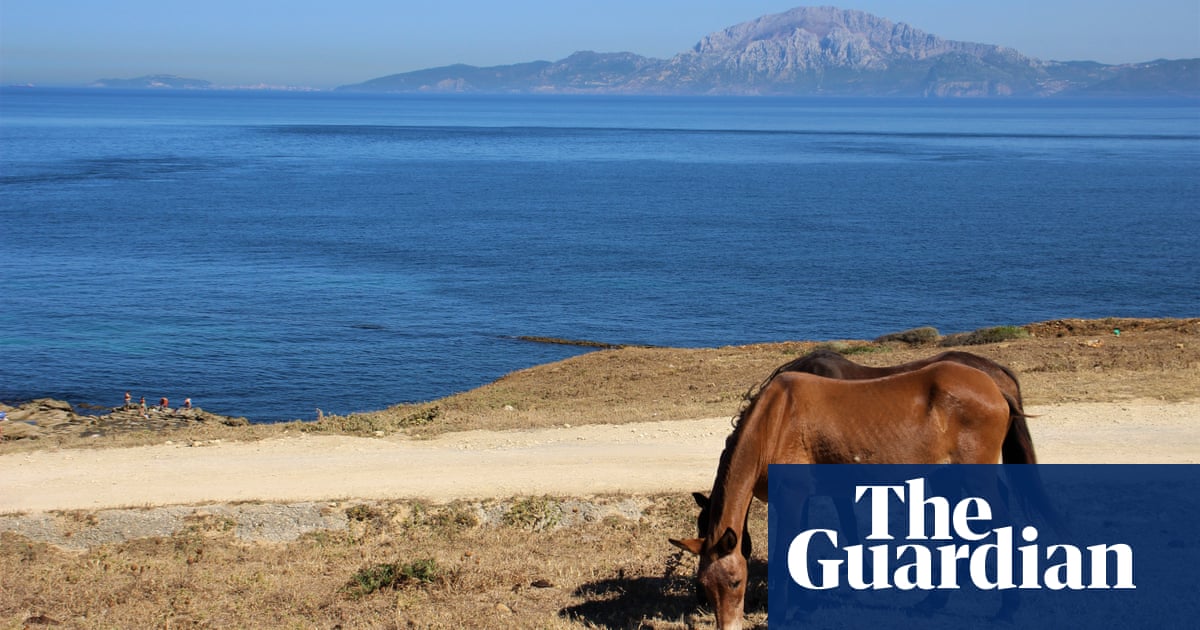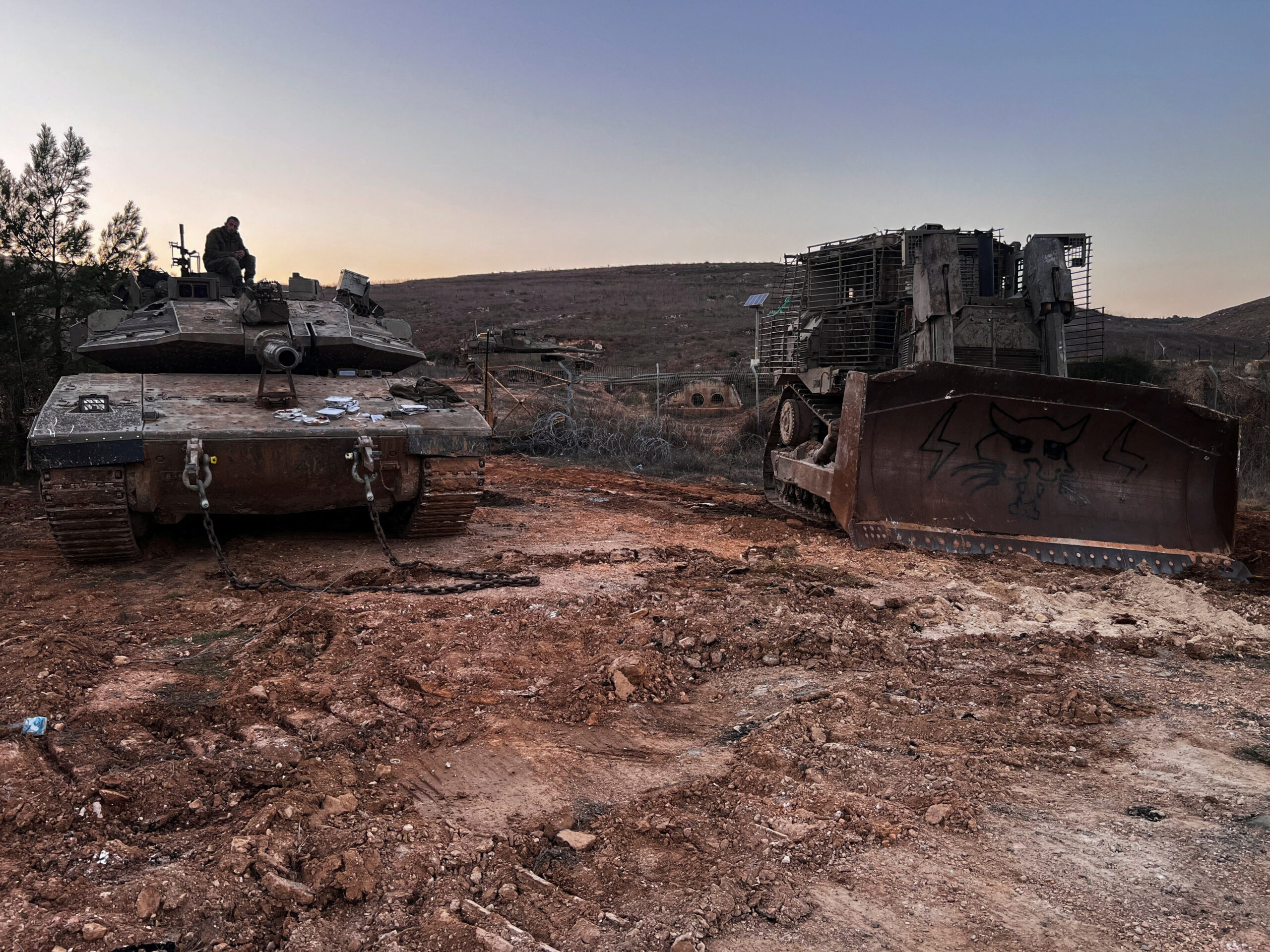
Show caption Cádiz – Jebel Musa Mountain2 Photograph: Edwina Pitcher / Wild Guide Spain holidays Bandits, beaches and Roman baths – Andalucía’s wild side Away from the main cities, the region’s dusty plains and green mountains offer hiking, ancient ruins and no crowds, as the author of a new guide reveals Edwina Pitcher Wed 18 May 2022 07.00 BST Share on Facebook
Share on Twitter
Share via Email
Costa de la Luz, Cádiz
The golden sands south from Cádiz form part of the Costa de la Luz and run to the southernmost tip of continental Europe at Tarifa. This is one of the least-visited stretches of Andalucían coast, but is a meeting place of cultures and continents: Africa with Europe; the Atlantic with the Mediterranean. From Tarifa, the hazy blue silhouette of Jebel Musa mountain in Morocco is visible – 14km away over the strait of Gibraltar. Visit in spring and autumn to see skies filled with griffon vultures, eagles and storks on migration paths to Africa.
Stargaze from a safari tent at Jabalina Tiendas , outside Cádiz.
Combine ancient history with a day at the beach at Playa de Bolonia, an hour’s drive south of Cádiz. Here lie the enigmatic ruins of a Roman port city, Baelo Claudia, where a statue of Emperor Trajan faces the sea framed by columns, now holding up only sky. A short walk uphill is La Peña Sacra de Ranchiles, an open-air altar carved in a prominent rock, possibly by the Turdetani, pre-Roman tribes. Wander from here to gaze up at Cueva del Moro, a cave facing out to Africa, with engravings 20,000 years old.
Head to the nearby beach at Valdevaqueros for views of sweeping dunes and hundreds of kite surfers; beaches at Los Caños de Meca and El Palmar have become a surfers’ mecca. Enjoy surf, sand and a cerveza followed by a heaped plate of pescaíto frito, crispy fried fish, with Cádiz Experiences, which organises surfing and gastronomy experiences in the area.
At the end of the day, bed down in a luxurious yurt at Finca Suerte Tierra (from €56 a night for two) just outside Tarifa, or, when it reopens in autumn, stargaze from a safari tent at Jabalina Tiendas outside Cádiz.
Valle del Genal, Málaga
The village of Gaucín, Málaga. Photograph: Edwina Pitcher / Wild Guide
The wooded hills of the Valle del Genal, 20km inland from the Costa del Sol, are a world away from the busier resorts. Hairpin bends and tight switchbacks echo the wily ways of its notorious 19th-century bandits, and lead to villages largely unchanged since their day. The Genal valley is home to some of the most picturesque pueblos blancos, or “white villages”, such as Atajate, Benarrabá, Algatocín. Head to Genalguacil in the first two weeks of August, when its streets are filled with contemporary artworks from its biennale (Pueblomuseo.es), or to the village of Gaucín, for its ancient castle with immense views over the Serranía de Ronda and the Genal valley.
Great swathes of rich wilderness contrast with all the golf courses along the coast. You can hike up to Castaño Santo, an 800-year-old chestnut tree deeply rooted in the Costa del Sol’s history and reddish rock, whose gnarly girth saw the 16th-century Morisco rebellion under Catholic rule. The hike is 13km and starts behind La Quinta Golf and Country Club in Marbella (GPS ref: 36.5259, -4.9926).
Baños de la Hedionda Roman bath, Málaga. Photograph: Picasa/Edwina Pitcher / Wild Guide
There is also idyllic wild swimming in the Genal, with hot springs at Baños de la Hedionda, a 15-minute drive from Estepona, hidden in overgrown ruins of Roman baths. Nearby, a deep lake, Lago de las Tortugas, offers an unexpected oasis.
For a longer hike, the 700km Gran Senda de Málaga route encircles the entire province of Málaga. Take a stage of this footpath from the village of Benarrabá to Genalguacil to find a 3km detour along the River Genal (signposted left as you cross the river). It leads to La Venta de San Juan, (+34 952 152 055), a rustic restaurant close to several river pools: the chorizo and morcilla (Andalucían-style black pudding) are homemade.
Casa Rural Ahora is a rustic guesthouse offering slow food, acres of wild gardens, and a spa with mud baths and whirlpool bath. Doubles from €278 for two nights full-board.
Sierra Sur de Sevilla, Seville
Gruta del Pontón, a hidden grotto in Seville. Photograph: Edwina Pitcher / Wild Guide
South from Seville, you plunge into a different rhythm of life. To the east, endless, sunburned fields and olive groves give way to dusty, orange plains around the ancient towns of Osuna and Carmona. Miles of dead-straight Roman roads pass cortijos, farmhouses with faded grandeur peeling in the sun, storks nesting in bell towers, and palm trees. In a moment the scenery can shift – a fork in the road will lead you up into the Sierra Sur de Sevilla or down to a hidden watery oasis.
Myrtle, rosemary and rockrose hide watchtowers and castles that formed part of La Banda Morisca (the Moorish Strip), a 13th-century frontier between the Muslim kingdom of Granada and Christian Seville. You can hike up and wander into one of these ruined castles, Castillo de Cote, signposted from the town of Montellano.
Its dusty canyons, cacti and ramblas provide the backdrop to The Good, the Bad and the Ugly and A Fistful of Dollars
Hike or bike along the Vía Verde de la Sierra, a 36km cycle route, which starts in the beautiful pueblo blanco of Olvera and follows an old train line to the town of Puerto Serrano. It winds by ancient dolmens, gorges and the gigantic limestone crag of Peña de Zaframagón. It’s home to a colony of griffon vultures, so pack some binoculars to watch them wheeling overhead.
An hour’s drive south of Seville is the embalse (reservoir) of Torre del Aguila. The evening light catches the stone of its eponymous watchtower, reflected in the lake below. In this evocative place, it’s easy to see how folk tales have sprung up from the eroded landscape. They say it was at Gruta del Pontón, a hidden grotto about an hour from Torre del Aguila, that the famous bandit El Tempranillo negotiated his pardon with Ferdinand VII.
At Mesón el Chaparrete (+34 625 03 79 92), a rural restaurant deep in the Sierra Sur de Sevilla, crusty loaves are still baked in old wood-fired ovens typical of the region. Camping el Peñón (camping from €4.90pp; bungalow €75 a night for two, €142 for six) sits beneath El Peñón de Algámitas, Seville’s highest peak, where great fingers of rock reach up 1,130 metres.
El Desierto de Tabernas and the Alpujarra Almeriense, Almería
El Desierto de Tabernas, Almería. Photograph: Edwina Pitcher / Wild Guide
About 20km inland from Almería, the eroded gullies and sun-scorched earth of the Tabernas desert begin. Its dusty canyons, cacti and ramblas ( dry riverbeds), provide the backdrop to numerous spaghetti westerns, most famously Sergio Leone’s masterpieces, The Good, the Bad and the Ugly and A Fistful of Dollars. From the parking at the Oasys MiniHollywood theme park, the circular 9km Sendero del Desierto leads through desert gullies, passing abandoned cave houses and tunnels carved into rock gorges.
El Paraje del Chef in Alpujarra Almeriense, Almería. Photograph: Edwina Pitcher / Wild Guide
A 20-minute drive north of the Tabernas desert are the foothills of the lesser-visited Sierra de los Filabres. From the village of Senés a signed footpath, the Sendero Hisn Xenex, leads 2km up to the lost ruins of a medieval Islamic citadel.
The peaceful hills of the Alpujarra Almeriense, in the foothills of the Sierra Nevada mountain range, are a 40-minute drive from Tabernas. A beautiful place to watch a sunset is the hilltop Ermita de los Desamparados, a chapel a short walk uphill from the hamlet of Almócita. One of the area’s best-kept secrets is El Paraje del Chef (doubles €340 full-board), with roaring fires, mouthwatering dishes, local wines and cosy cabins.
Sierra de Aracena, Huelva
The River Chaza, Huelva. Photograph: Edwina Pitcher / Wild Guide
Mossy walls wind along the lanes and valleys of Huelva province, across a landscape dotted with twisted cork oaks and mighty holm oaks. Bordered by Portugal’s Alentejo region to the west and by Extremadura to the north, this area sits between some of the oldest borders in Europe, with nothing to mark them but rivers and ruins. It’s famous for its black pigs, from which Spain’s highest quality jamón is produced, and it’s on the menu at many an onubense bar.
Smuggling was, for centuries, a way of life for the townsfolk on each side of the border. Old contraband routes run along the Chanza River, dividing Spain and Portugal. Start at Molino de la Laguna, just outside the village of Paymogo, by the ruins of the old flour mills and follow the footpath upstream for 2km to pass rope bridges, olive groves and numerous places where you can swim across the border.
An hour’s drive east takes you into the Sierra de Aracena, whose placenames – Alájar, Zufre and Almonaster – echo their Arabic past. At Almonaster a 10th-century mosque sits proudly above a tangle of white, jasmine-perfumed streets. In the village of Zufre in late August, there are horse races up the ancient, cobbled streets, cheered on from crowded balconies. The nearby village of Santa Ana la Real is a haven for hikers, with paths signposted for stargazing, geology, or forest book-swaps hidden in trees.
Stay in a cosy mill house along the River Alájar at Molino Rio Alája, which has six stone cottages in peaceful surroundings (from €145 in El Aguila, sleeping two adults and two children. There’s birding, gastronomy and cycling here, too.
Wild Guide Andalucia – Hidden Places, Great Adventures and the Good Life in Southern Spain by Edwina Pitcher is published by Wild Things (£18.99 print/£6.99 ebook). Guardian readers can receive 20% off and free P&P with code Guaridan22a atwildthingspublishing.com








